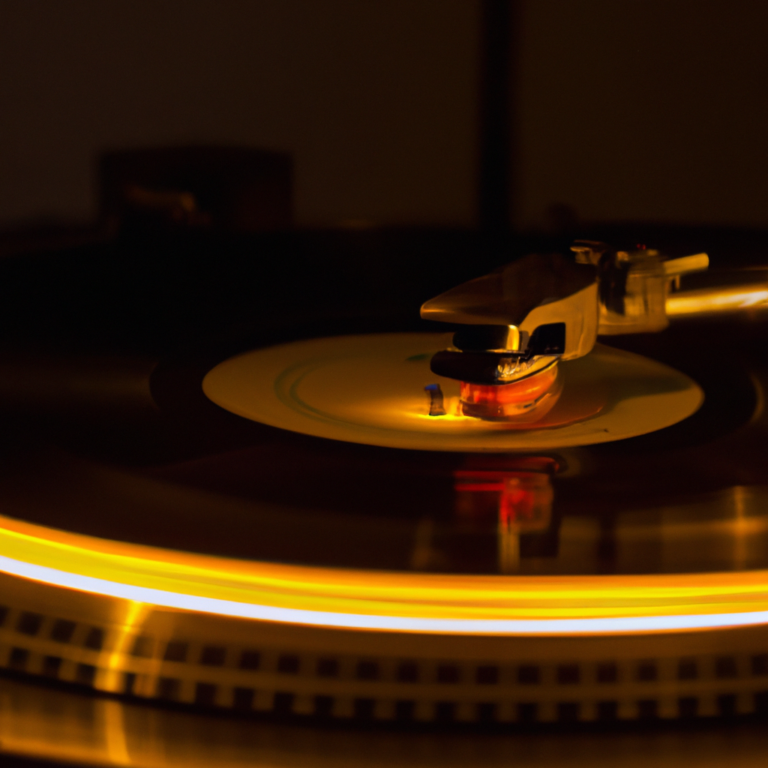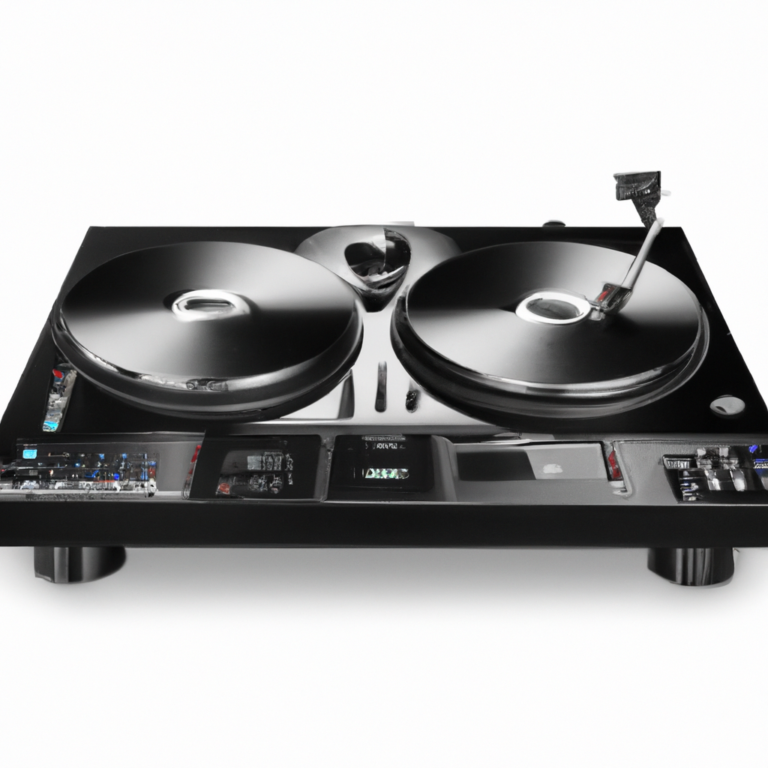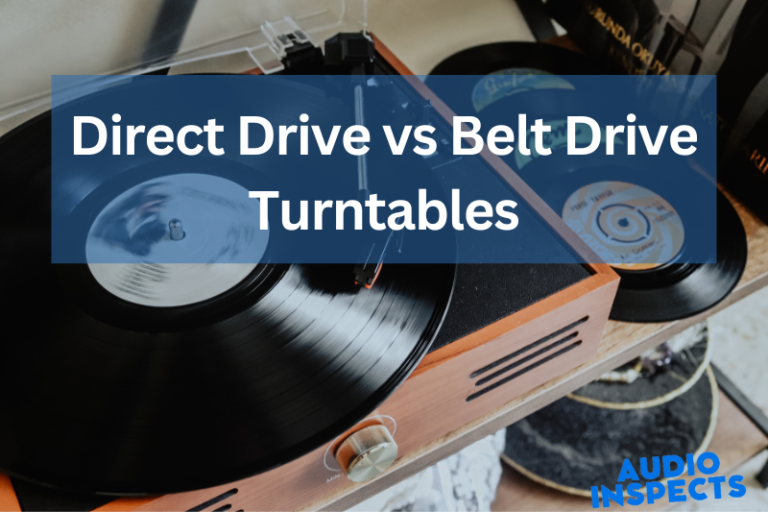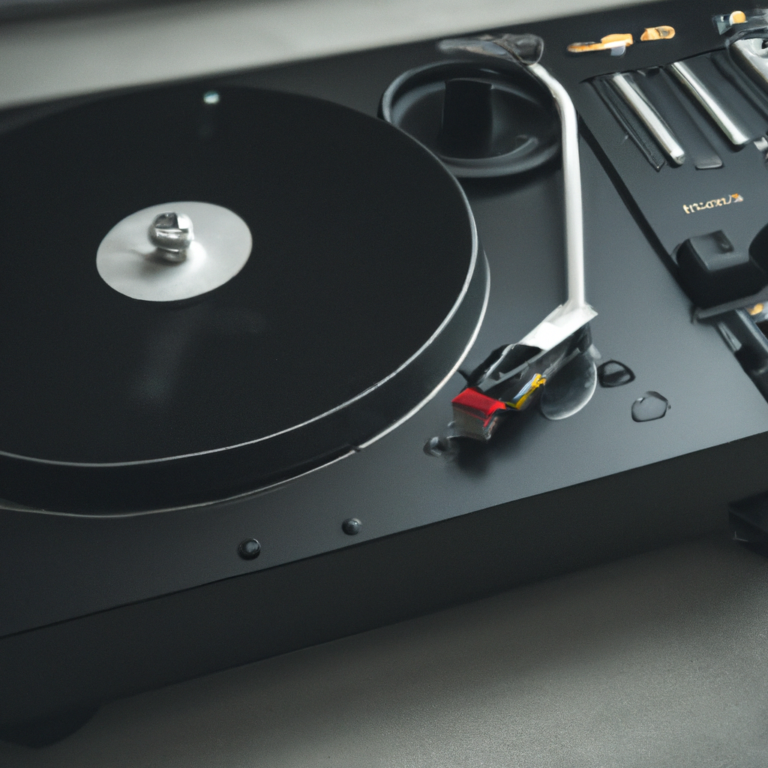What is a Direct-Drive Turntable?
Direct-drive turntables use an electric motor to spin the record platter, instead of the belt drive system used by conventional turntables. This makes them more reliable, and they can start and stop much faster. In addition, they are capable of reaching higher speeds and can achieve more accurate rotations.
Direct-drive turntables are also renowned for their sound quality, as the electric motor provides a more consistent speed, resulting in fewer distortions and better audio fidelity. Moreover, they are sturdier and last longer, making them a great choice for DJs and audio professionals alike.
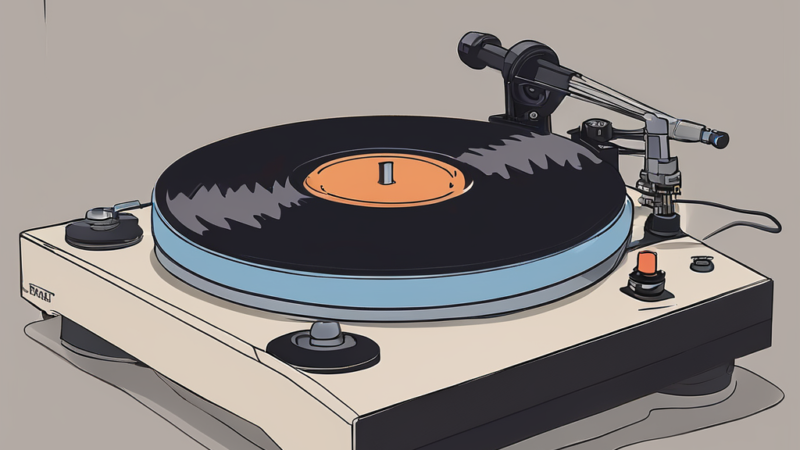
What is a Direct-Drive Turntable?
A direct-drive turntable is distinguished by its motor, which is connected directly to the platter. This differs from other types of turntables whose platter is driven by a belt or other external source.
A direct-drive turntable is an essential component for any audiophile or DJ. It features a platter that’s driven directly by a motor and usually includes a tonearm and a cartridge, which together create an analog sound. This allows for superior sound quality and high-fidelity audio than traditional record players.
Direct-drive turntables are also highly sought after for durability, precision, and speed stability.
How Direct-Drive Turntables Work?
A direct-drive turntable’s motor is connected directly to the platter, the surface where the vinyl record rotates. This type of turntable is known for its speed stability and precision when playing records.
As an added advantage, these turntables also come with quartz lock and pitch control capabilities, which allow users to manually adjust the speed of the platter to match the speed of the vinyl record being played. This is useful for mixing multiple tracks.
Find out more about how direct-drive turntables work.
Advantages Over Other Types of Turntables
One major benefit is the magnetic braking which ensures precision and durability. This is because the motor has direct contact with the platter, allowing for precision control of the speed and stability, which is especially useful for DJs and mixing.
It also gives the user the ability to adjust the pitch of a record using the quartz lock feature. Finally, direct-drive turntables offer improved sound quality and audio fidelity compared to belt-driven turntables, making them a great choice for both casual listeners and audiophiles.
If you want to know more, consider reading another article about direct-drive vs belt-drive turntables.
The History and Evolution of Direct-Drive Turntables
The first ever direct-drive turntable was created in 1969 by Japanese electronic company, Technics, and it quickly gained the attention of DJs for its durability, precision, and speed stability.
Since then, Technics has developed many models, each with improvements on the previous. The introduction of the Quartz Lock feature in 1976 allowed for even more accurate pitch control, while the Magnetic Braking system in 1978 further increased the sound quality of the device.
In recent years, other companies have made their own contributions to the direct-drive turntable, with models designed to match the needs of both amateur and professional DJs.
More on the evolution of direct-drive turntables.
The Components of a Direct-Drive Turntable
The history and evolution of direct-drive turntables have revolutionized the vinyl experience. But what really makes a direct-drive turntable so special? To truly understand its remarkable capabilities, we need to take a closer look at the components that make it up.
The platter is the centerpiece of any turntable, and direct-drive turntables use a flat, heavy platter to reduce vibration and provide a stable platform for the vinyl record.
The motor is the heart of the turntable and must be precisely calibrated to achieve the highest audio fidelity and greatest durability.
The tonearm and cartridge must also be of the highest quality, as any imperfection will affect the sound quality and precision of the performance.
Setting Up Your Direct-Drive Turntable
Setting up a direct-drive turntable is not as complicated as it may seem. Here’s a step-by-step guide to get you started on optimizing performance for your record player.
Step-by-Step Guide on Setting Up a Direct-Drive Turntable
To begin, you’ll need to gather the necessary materials. This includes your turntable, a slipmat, a counterweight, a headshell, a headshell weight, and a stylus. Once you have these items, you’re ready to begin.
- First, set up the turntable. Place it on a flat, level surface. Make sure the power switch is in the off position, and plug in the turntable to an electrical outlet.
- Next, attach the counterweight to the arm of the turntable. You may need to adjust the counterweight to make sure it is balanced.
- Third, attach the headshell to the arm. Make sure it is securely attached and that the wires are properly connected.
- Fourth, attach the headshell weight to the headshell. Once again, make sure it is securely attached.
- Fifth, attach the stylus to the headshell. Make sure it is securely attached.
- Finally, place the slipmat on the turntable. Your direct-drive turntable is now ready to use.
By following this guide, you can easily and correctly set up your direct-drive turntable. With the right materials and instructions, you’ll be ready to start spinning your favorite records in no time.
Maintaining Your Direct-Drive Turntable
Maintaining your turntable is an important part of keeping it running like new and keeping your vinyl collection in pristine condition. Regular care will ensure your direct-drive turntable continues to provide great sound quality and precise performance for years to come.
The most important part of maintaining your direct-drive turntable is regular cleaning. Dust and dirt can affect the performance of the platter, tonearm, and cartridge, so it’s important to keep it free of debris. Use a soft cloth to wipe down the platter and dust the cartridge with a soft, dry brush.
You should also check the alignment of your tonearm periodically. Proper tonearm alignment is essential for optimal sound quality and performance. Most direct-drive turntables come with a tracking force gauge and other tools to help make setup easy.
FAQs
What is the difference between direct-drive and belt-drive turntables?
Direct-drive turntables feature a motor connected directly to a platter, while a belt-drive turntable uses a belt to connect the motor to the platter.
In general, direct-drive turntables are preferred by DJs and audio professionals, as they provide greater precision, speed stability, and pitch control than a belt-drive turntable. Moreover, direct-drive turntables are equipped with quartz lock and magnetic braking features, making them more capable of mixing.
Can direct-drive turntables be used for DJing?
Absolutely! In fact, they are the perfect choice for DJs, as they are designed for high-intensity usage. With their powerful motors and precise pitch control, direct-drive turntables are perfect for mixing. The quartz lock feature ensures that the speed stability is maintained even when the records are being scratched or when the motor is being pushed to its limits. Plus, the magnetic braking system helps keep the platter spinning at a consistent rate. This makes it perfect for DJing, as it allows for accurate beatmatching and mixing.
How does a direct-drive turntable affect sound quality?
Well, it actually offers a great range of benefits. Firstly, direct-drive turntables offer an unparalleled level of accuracy and precision. This means that audio fidelity is much higher than with other types of record players. Furthermore, due to their magnetic braking and quartz lock technology, direct-drive turntables provide incredible speed stability. This helps to ensure a consistently high-fidelity sound with every analog track you play. Ultimately, direct-drive turntables offer the perfect balance between sound quality and durability.
Conclusion
Direct-drive turntables have been a staple of audio fidelity for decades, and for good reason. They offer higher precision, superior sound quality, and unparalleled durability. Their direct-drive mechanisms and components provide features such as quartz lock, pitch control, and magnetic braking, allowing DJs and audiophiles to mix and listen to analog records with unprecedented accuracy and audio fidelity.
Whether you’re just starting or you’re an experienced vinyl enthusiast, a direct-drive turntable will provide you with a reliable and enjoyable listening experience. Choose wisely, and enjoy the ride!
Our Mission: At AudioInspects, we are dedicated to providing the most comprehensive and authentic reviews of audio equipment on the market. We conduct independent testing and research of products, so you can make an informed decision before making a purchase. Our mission is to help you find the best audio equipment to improve your listening experience. So trust us to deliver the most reliable recommendations and advice.
Disclosure: When you do decide to make a purchase through our links, please note that we may earn a commission, but this does not affect the honesty of our reviews. You can read our affiliate disclosure in our Disclosure.


